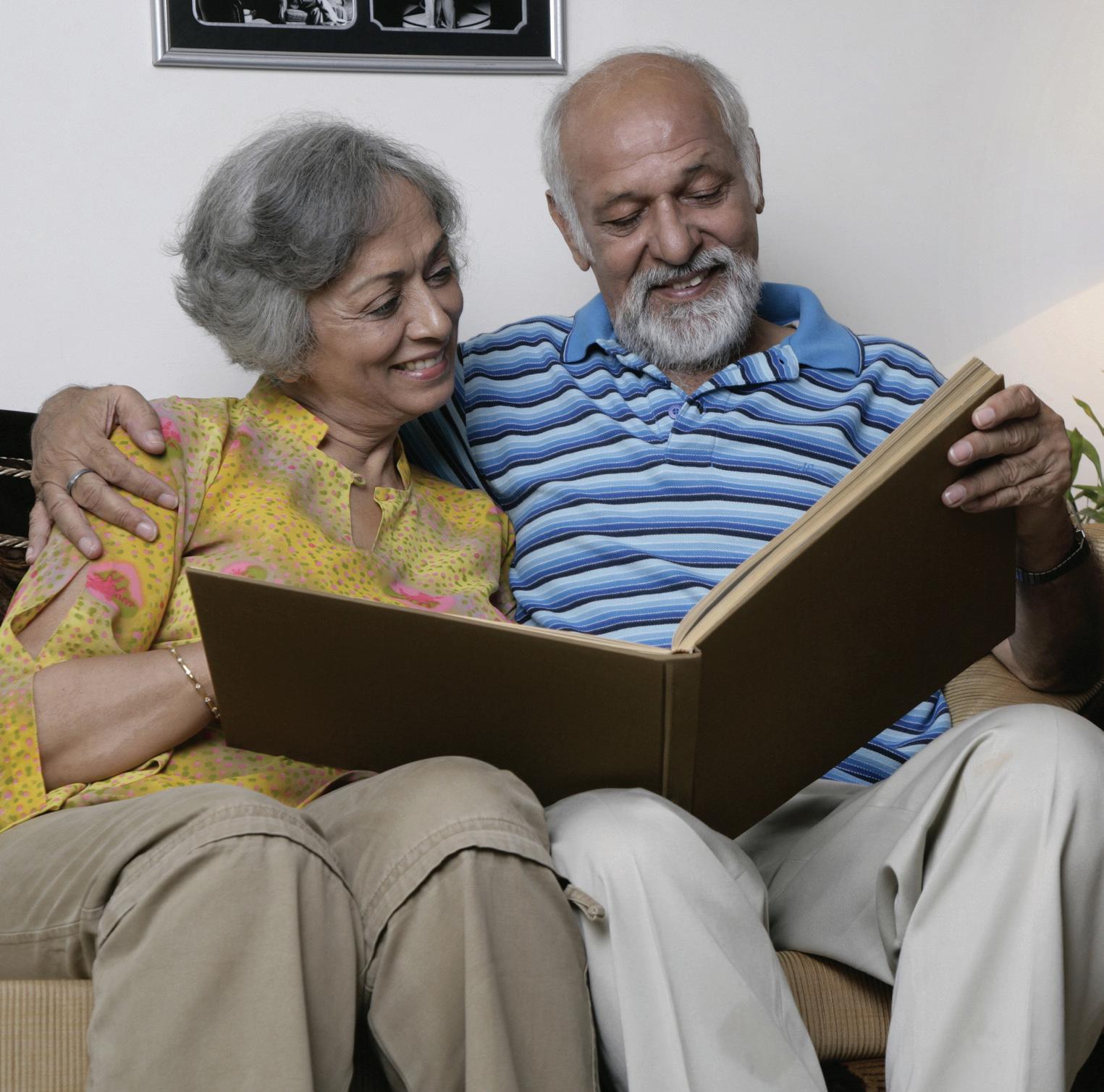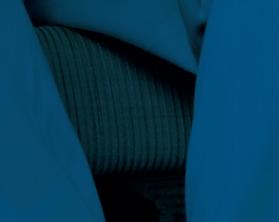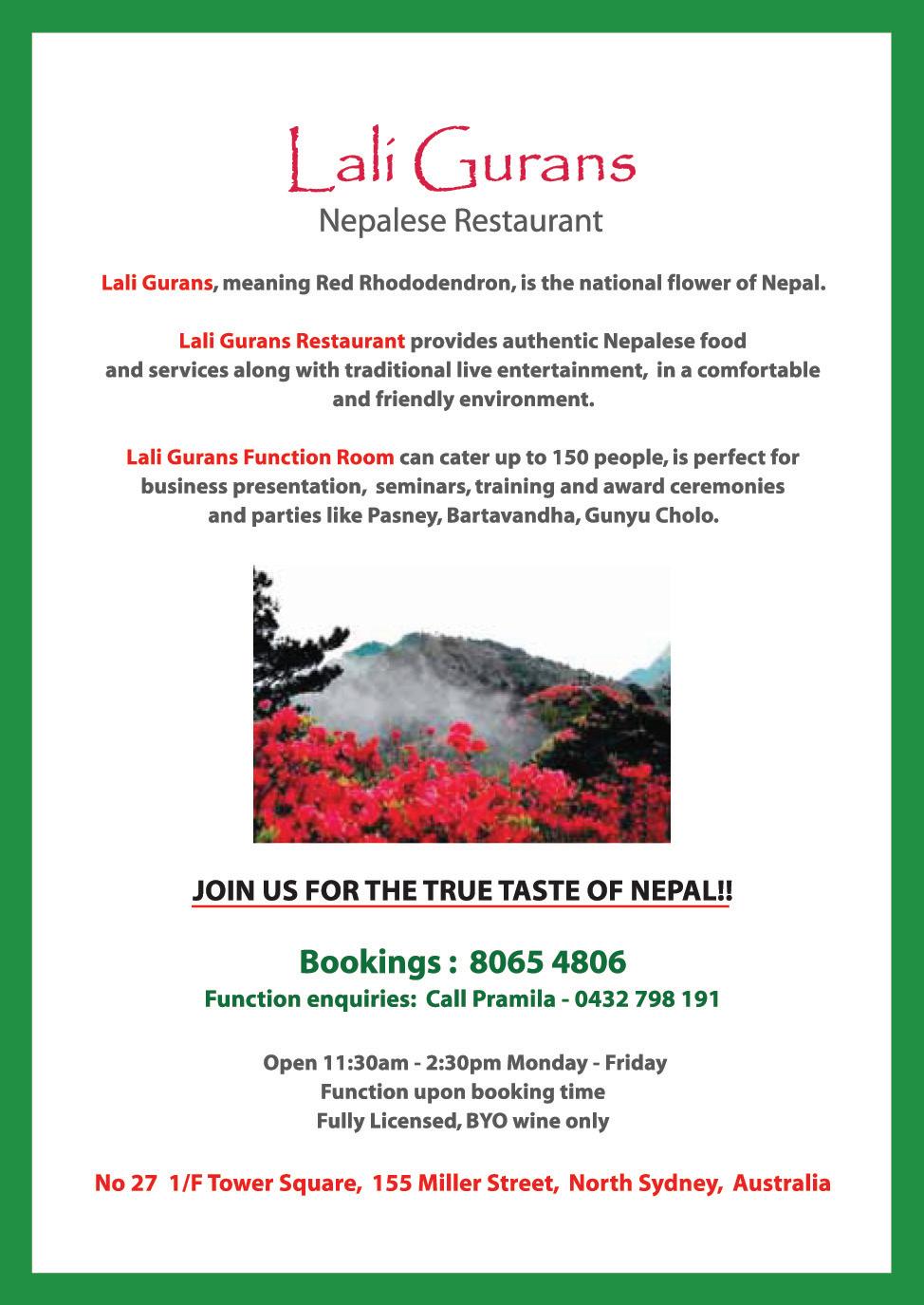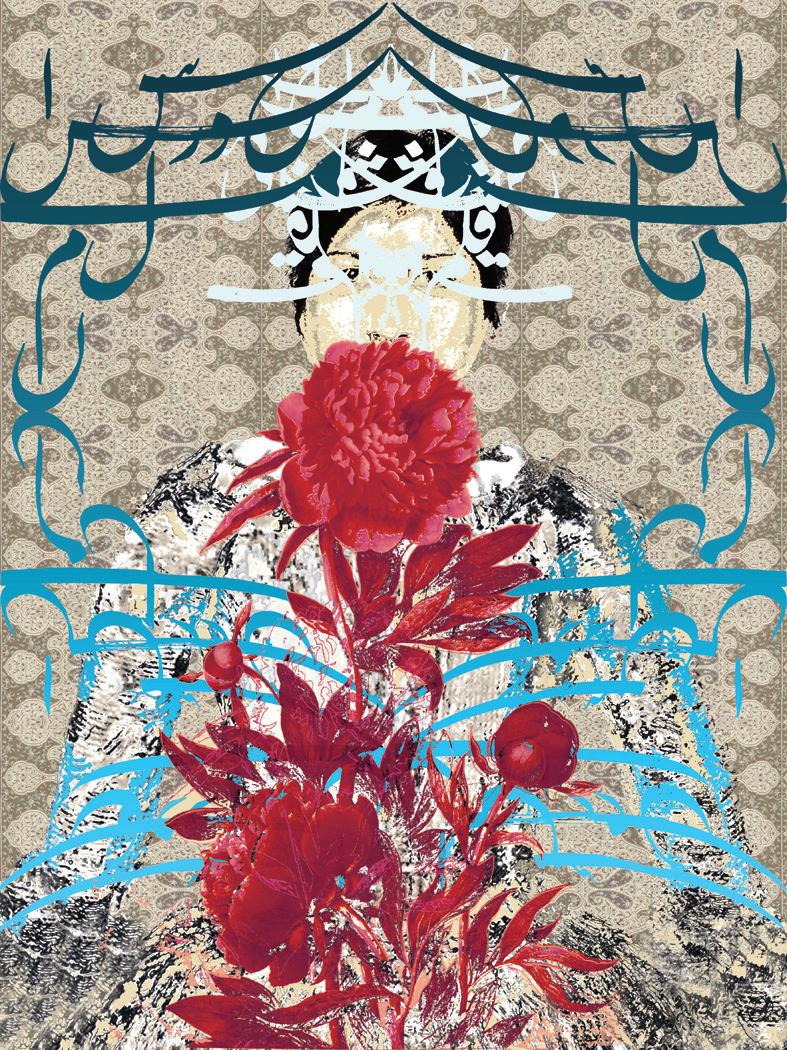
5 minute read
The meeting of East and West does not multicultural make
from 2009-12 Sydney (2)
by Indian Link
Multicultural is too simplistic a word to describe the works of Nusra Latif Qureshi and Naeem Rana, says SHIVANGI AMBANI-GANDHI t is not as if using the word multiculturalism cures all the intercultural conflicts between people,” says Melbourne-based artist, Nusra Latif Qureshi. Her words ring true when you consider the timing of ‘this reminds me of someplace else’ - an exhibition of works by Qureshi and her husband, which showed at the Adelaide Festival Centre as part of the Oz Asia Festival 2009.
The exhibition, described in the catalogue as representing “the harmony and the tolerance we have as a multicultural Australian society,” came just months after the media exploded with news of racial attacks on Indian students.
“Multiculturalism” has become a problematic word to use - too simplistic perhaps - when describing the works of artists such as Pakistani-Australian Qureshi and her husband Naeem Rana.
Qureshi trained in the rigorous art of miniature painting, while Rana comes from a family of calligraphers and started training with his father at the age of 12. Both combine their traditional artistic styles with western practices and elements to create a narrative.
However, being Pakistani immigrants to Australia is but one aspect of their personality and their work.
“Sometimes its a bit challenging to be marketed as a ‘multicultural’ artist, as the work is seen by many to have an exotic feel, and some hidden meaning where there is none,” says Qureshi.
When asked to describe her practice in another exhibition catalogue, she wrote, “My presence as a woman, as an Asian, as a Muslim, as a migrant, as an ex-colonised, as a dark skinned individual and as a painter, determine the course of images I make.”
The historical symbolism of the feminine figure has been a central theme in her work for some time. In the Red Silks series, which was part of the recent exhibition, Qureshi superimposes a self portrait - from a passport photo - with a Victorian era dress, Urdu text, flowers and birds.
She decodes the symbolism thus: “The text is comprised of Urdu alphabets and some words like qalam, dawat, roshnai (pen, inkwell, ink). The word/text is there as an imposed element, and shows my weariness of word - spoken and writtenand its inadequacy at expressing human emotion. Bird for me represents a different state of mind that is not necessarily expressed in words or in phrases.”
In another series of works, also displayed in Adelaide, she approaches the one emotion most often represented in mass media - love.
“In these prints I have tried to explore and comment upon the idea of love and how it is understood or misunderstood as an emotion,” she says. She uses the most popular of these media - film, and more specifically Bollywood. “I worked with three old Indian classics, Umrao Jaan, Abhimaan and Kabhi Kabhi,” says Qureshi.
“In all these movies, it’s not a straight forward ‘love-story’ as is represented in so many Bollywood and Hollywood movies. I choose the scenes that I found visually potent and extremely charged with some emotional state of the characters and put a ‘dialogue’ on it in the form of text, like ‘My love is eternal’, or ‘Love me forever and ever’.”
Meanwhile, with his brazen use of colour and seductive female silhouettes, Naeem Rana’s works allude to another aspect of Bollywood - film posters. “Film posters are one popular form that represents the local way of design and perceiving aesthetics in South Asia,” he says.

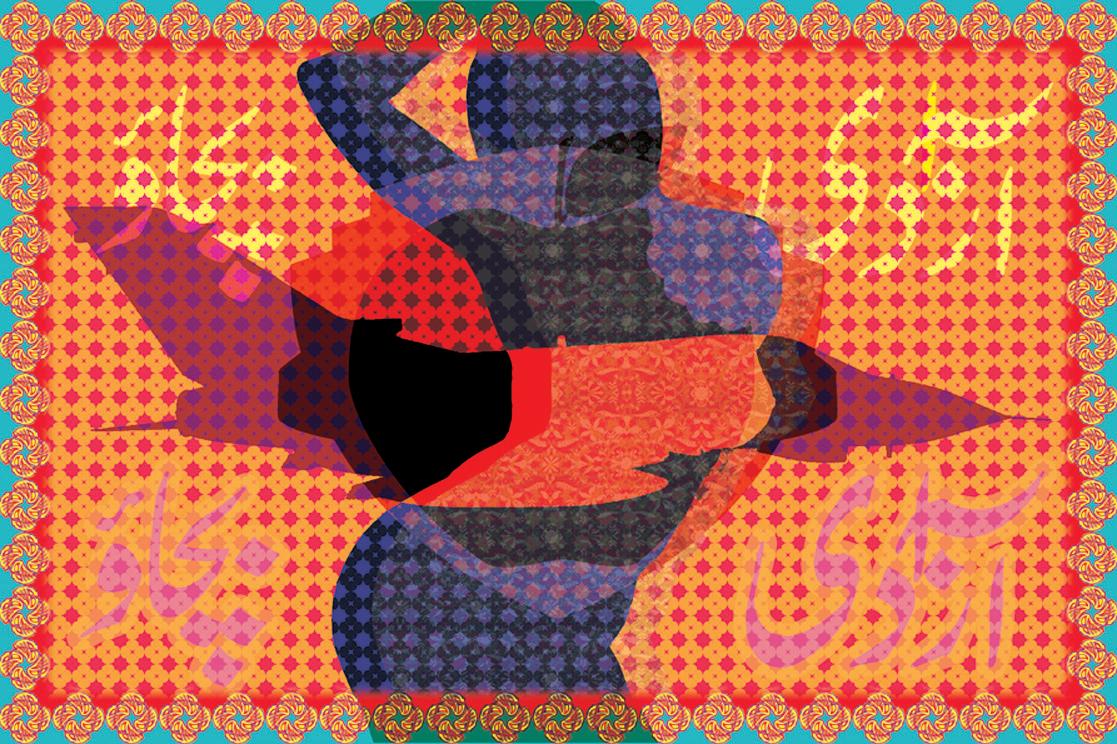
In Azadi Bachao, a female silhouette is superimposed with a fighter jet, the Universal Studios logo and the Apple logo, and the text Azadi Bachao (save the freedom) in Urdu calligraphy. Looking at the work, one is left pondering about the freedoms lost - especially for a woman - in a world of war and consumerism.

“The presence, importance and the contribution of women in making a culture and representing it and carrying it - that is what I appreciate and celebrate in my works,” says Rana.
Seeing their works together in a single exhibition, it is quite easy to see the commonality in the themes that Qureshi and Rana pursue.
Their use of the tools of appropriation and pastiche make the works interrelated and reciprocal - almost as if the couple is sharing their conversation with the viewer.
Though they have only collaborated on a work just once, it is quite visible that they borrow each others’ vocabulary. Qureshi reveals that the Urdu text in the Red Silks series is taken from an exercise sheet that Rana has been doing.

The couple came to Australia in 2001 to pursue post graduate studies.
I ask them about the difference in the approach to arts education in the two countries. “VCA (Victorian College of Arts) was much more of a dated, colonial experience with little awareness of the world and art practices,” Qureshi says. The so called traditional training (from the National College of Art in Lahore) is quite contemporary, where we studied history of western art as well as eastern art.”
Even the attitude to artists is surprisingly the opposite of what I expected to be in the two countries.
Qureshi says, “In Pakistan, people do not consider artists to be the ‘odd one out’ like in Australia and there is rarely a question like “But what do you really do?” as we have been asked by a lot of people here.” he claims she’s been doing drawings for as long as she can remember.
Well, last month, Sneha Baste won national acclaim for some of her art works.
Her Nature’s Magic, created in ink and pen, was selected as one of the final winners in the 2009 Young Australian Art Awards.
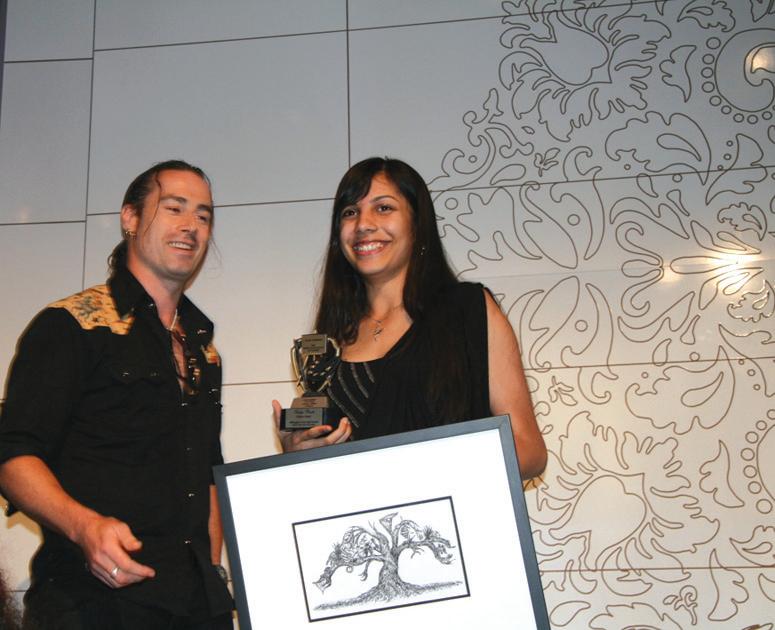
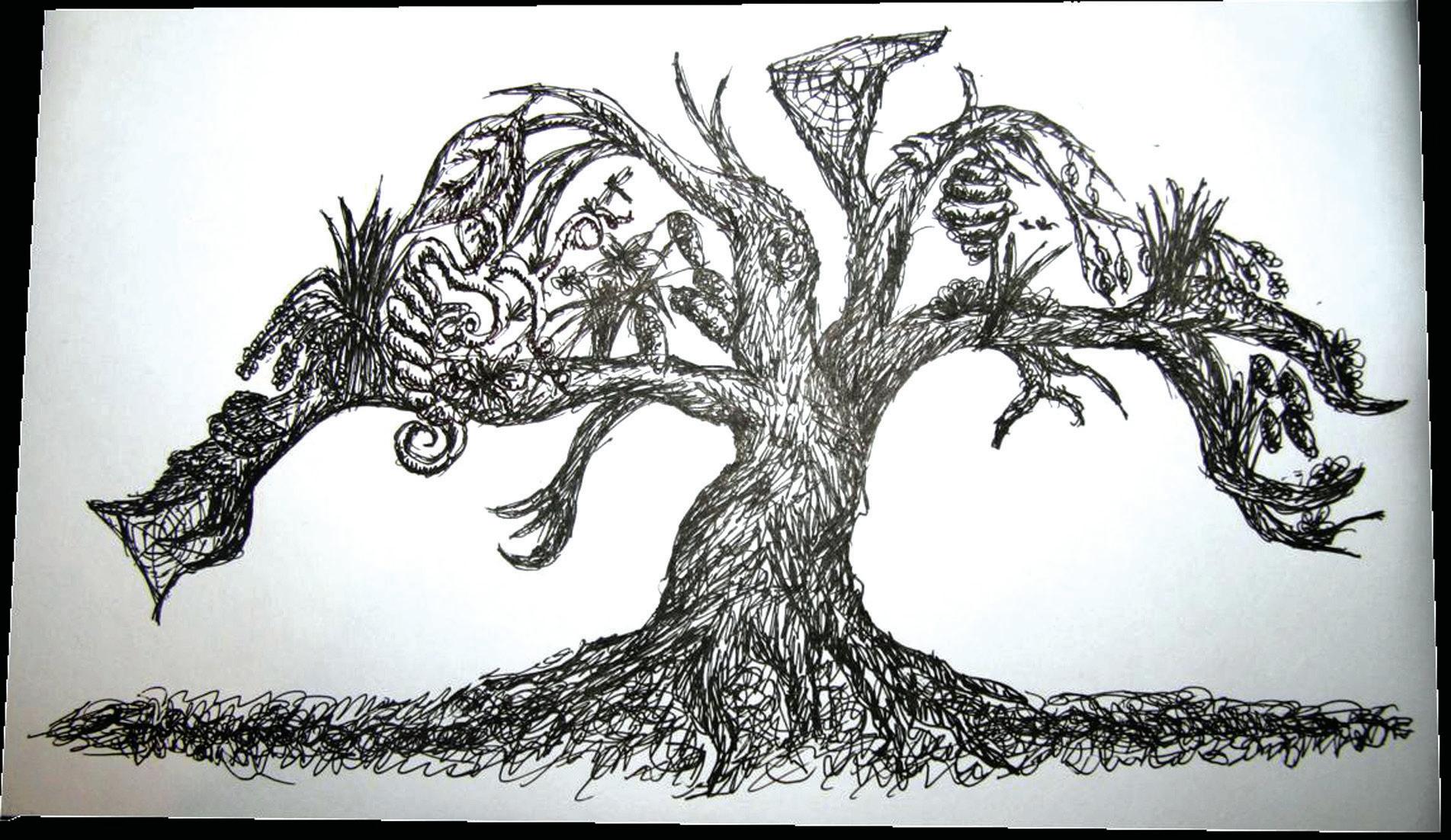
As well in her age group, Sneha won 2 Gold medals, one for a charcoal drawing called Gazing and another for a computer art titled In Search of an Answer
The Young Australian Art Awards is a Children’s Charity Network Initiative whose mission is “to celebrate and acknowledge the different artistic talents of our youth”. The vision for the initiative is “to provide children with the opportunity to express themselves through different art forms”. Sneha and her parents were invited to the presentation ceremony in late November, held at The Hilton Ballroom in Melbourne. In the presence of more than
300 guests which included book authors, teachers, publishers and artists, Sneha received her award.
The Young Australian Art Awards allow children the chance to express themselves in an area they feel confident about. To be given this opportunity helps build in children confidence and self-esteem, as they learn that you can succeed in life even if you are not the best in reading and writing, and it is only a matter of recognizing where your talents lie and focus on those. This award has illuminated a career path for Sneha.
Her passion for her art comes through clearly as she describes her work. There’s a touch of mystery in In Search of an Answer - it depicts a girl seeking something: what it is, is left for the viewer to decide. “I created it in Adobe Photoshop, using a WACOM tablet,” she explains.
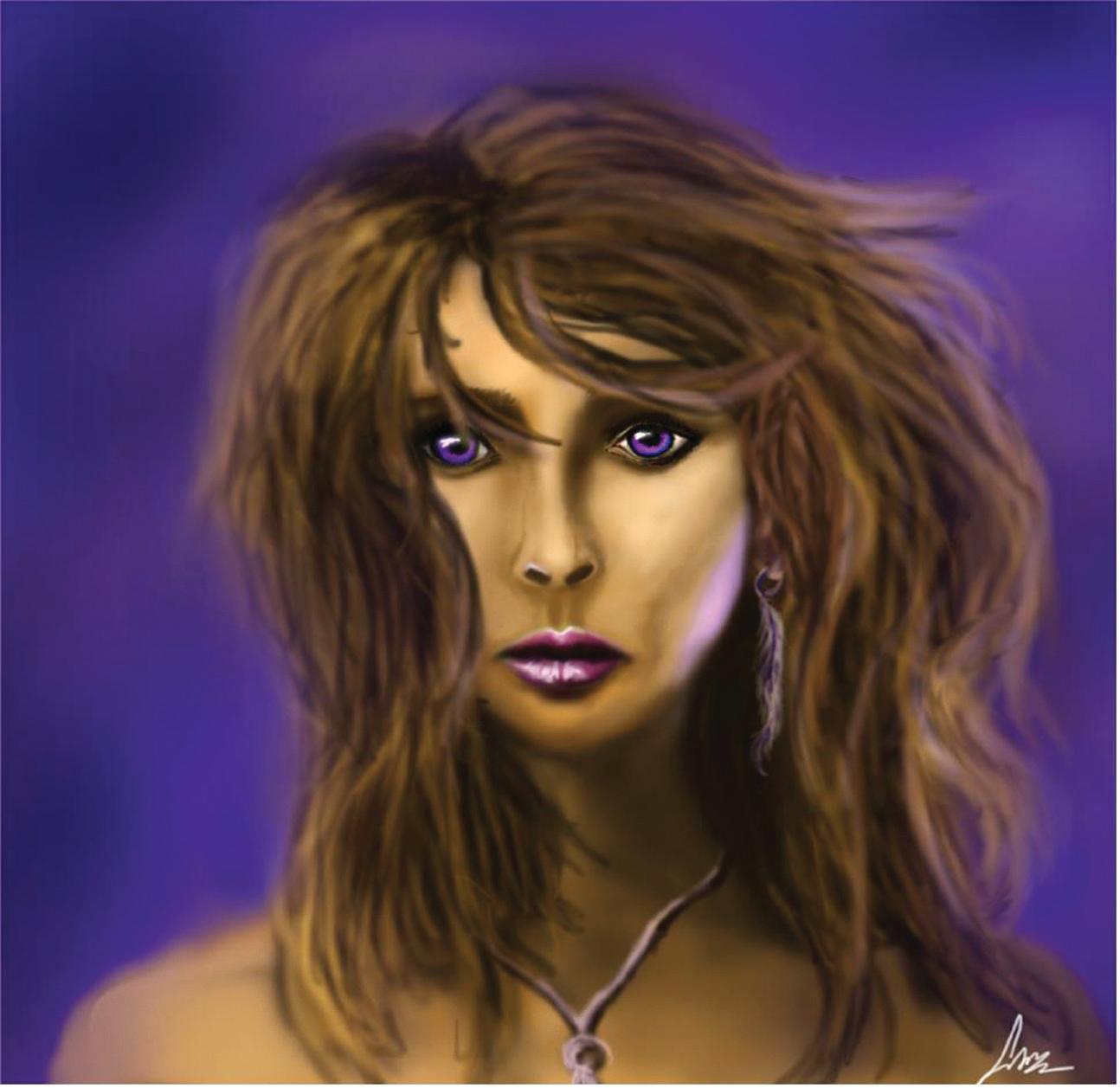
“In Nature’s Magic I show a tree that is not alive anymore, but which still has life depending on it. It is done with ink on drawing paper”.
Sneha will be going into the 9th grade at Willoughby Girls High school. It is obvious that art will remain a lifelong passion.
“At the moment I am exploring different mediums like pencil, charcoal etc. for example, is the first charcoal drawing I have ever done - it shows a boy looking out at you as though challenging you. Currently I am enjoying working with oil paints. I also love to do pottery and sculptures”. There is much creativity in the themes Sneha seems to pick.
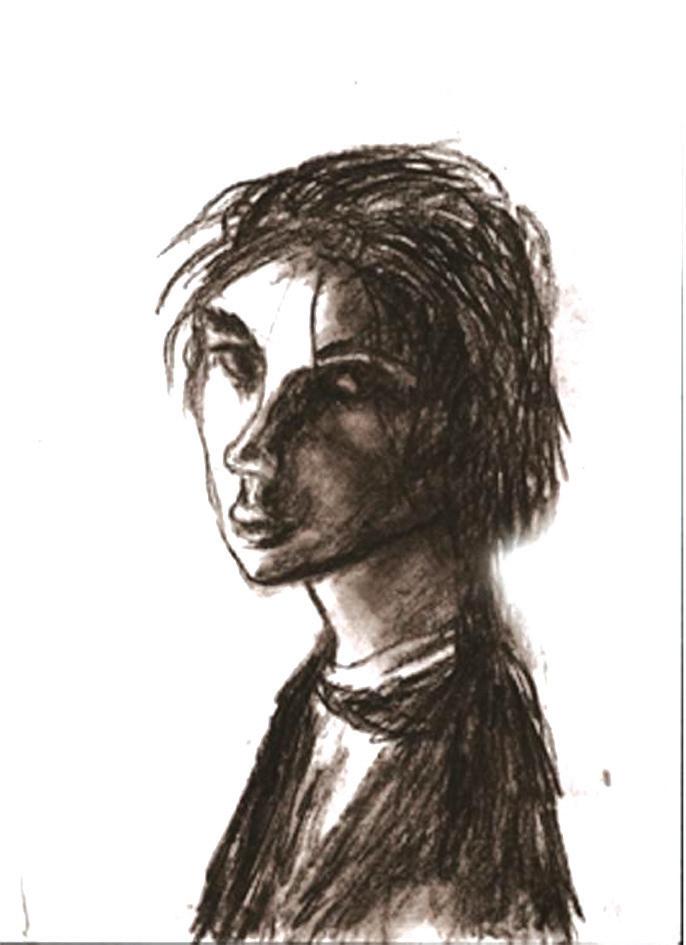
“Yes, I love giving wings to my imagination! Also, nature inspires me a lot. I love to read – I get ideas for my art from books and stories. My parents’ encouragement and my teacher’s guidance mean a lot to me”.
Looks like we have a young artist here who’s going to go places. Dream big and fly high, Sneha!
